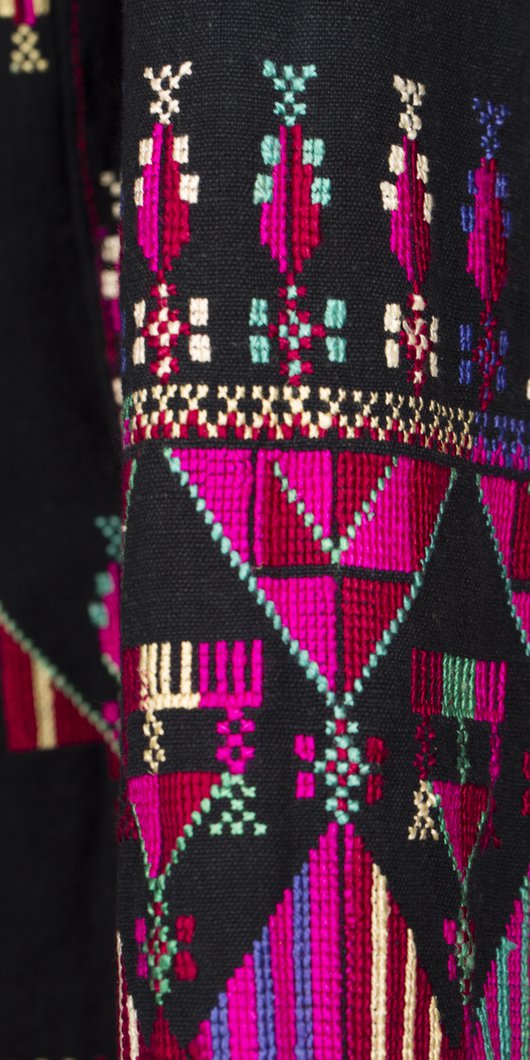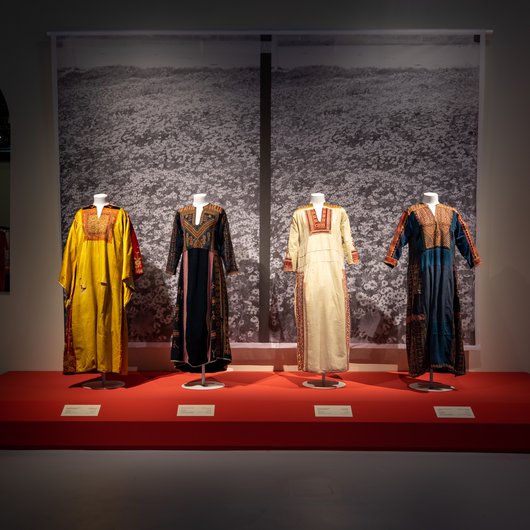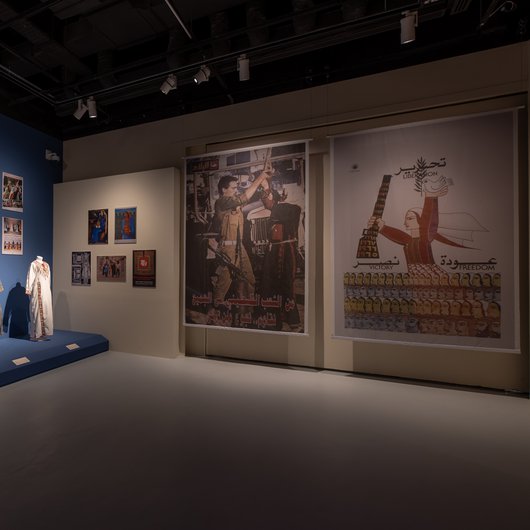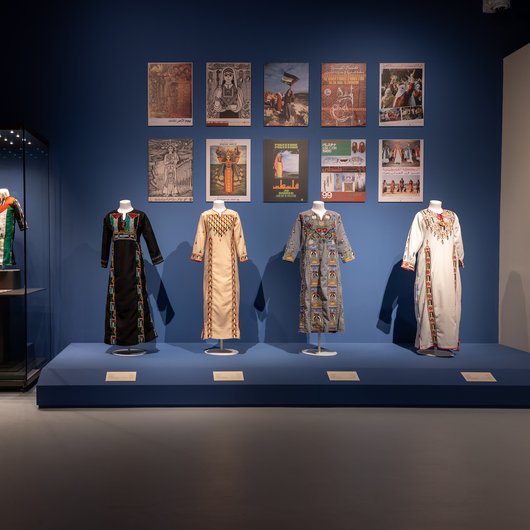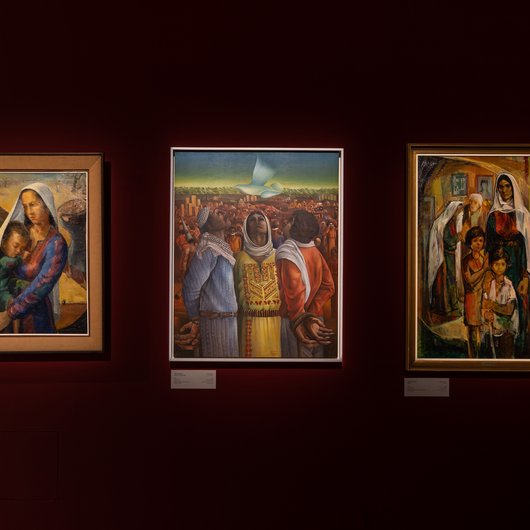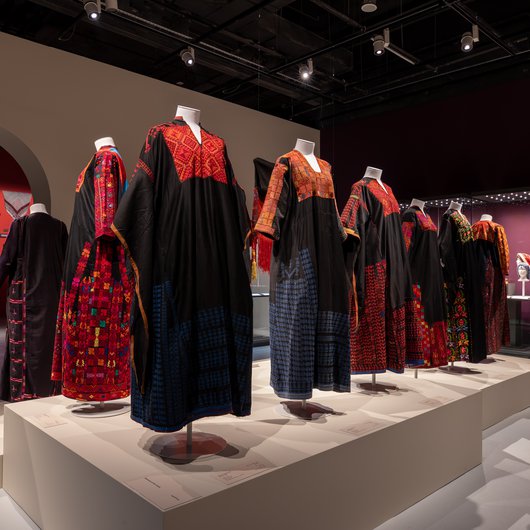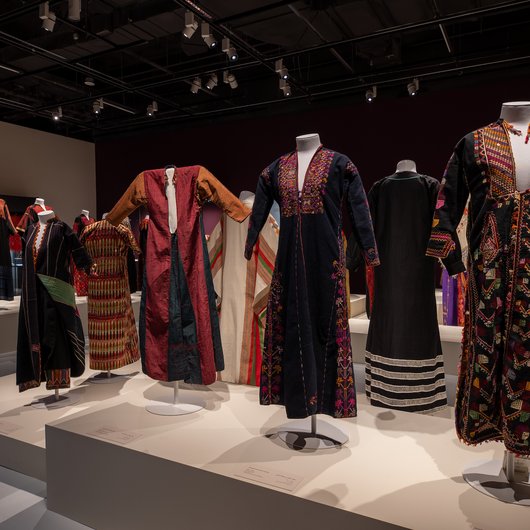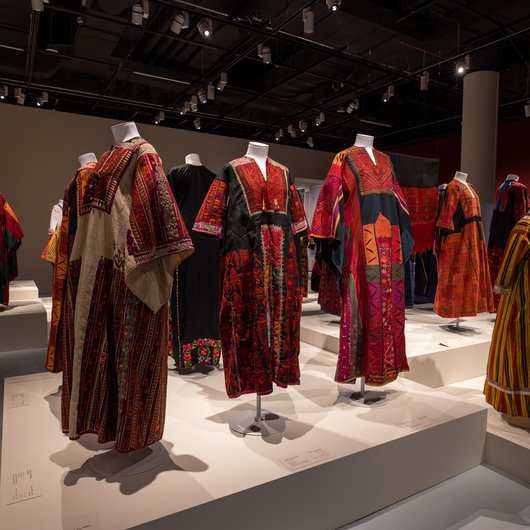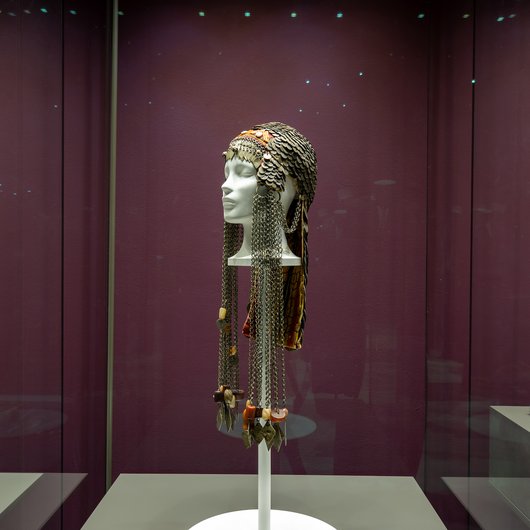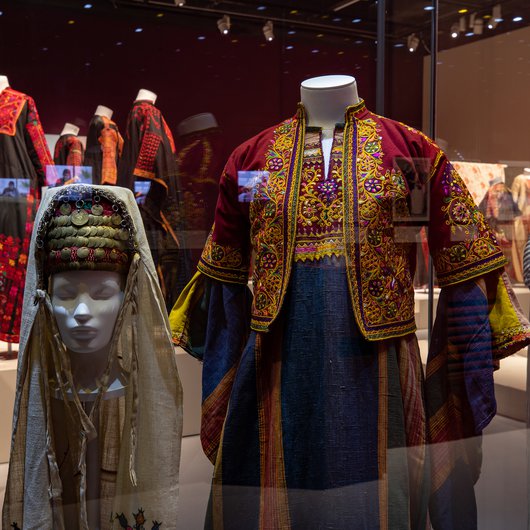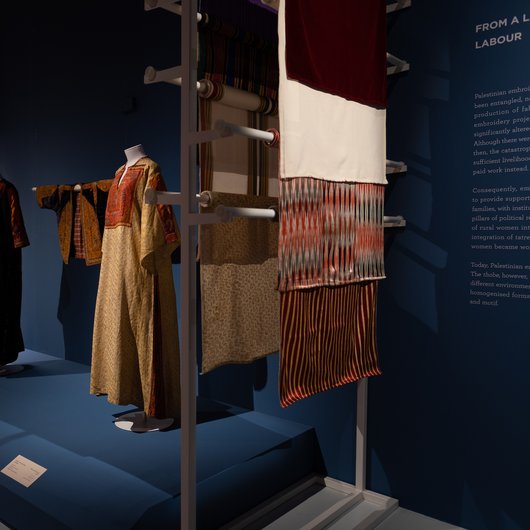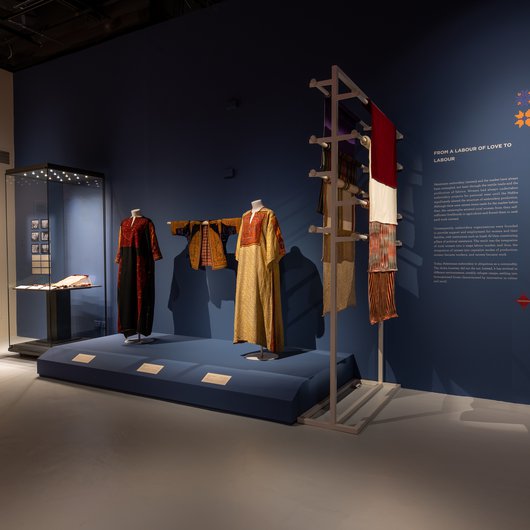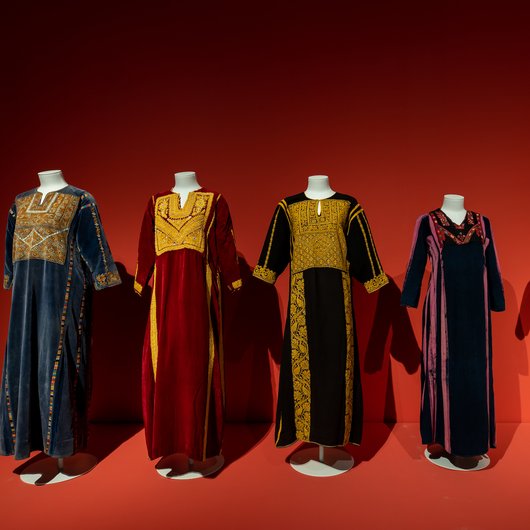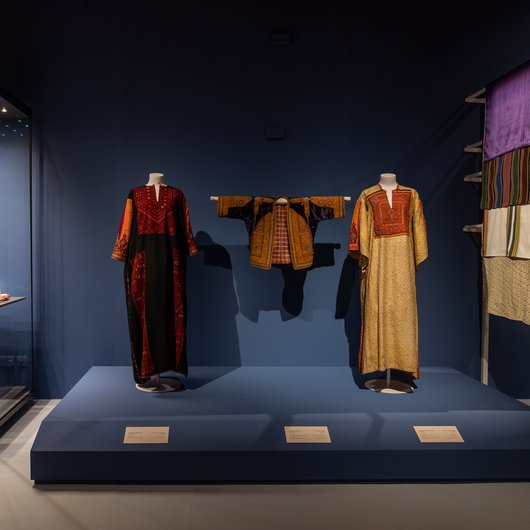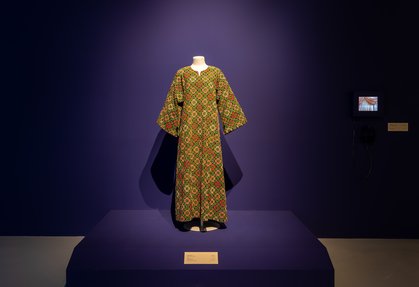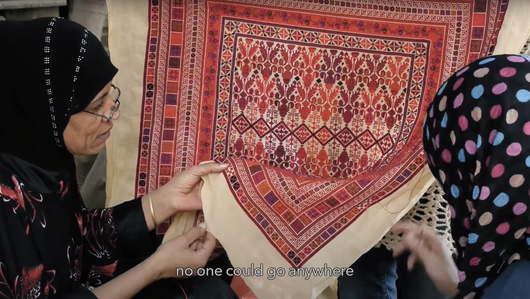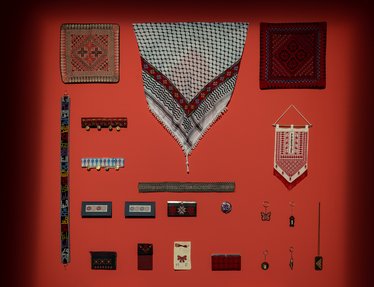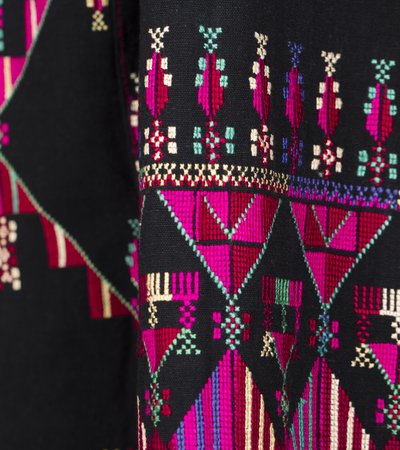About the Galleries
Embroidery in Daily Life: Testaments to Women’s Labour
Palestinian dresses (thobes) are typically worn during special events and weddings, but this is not the full story. They are also daily-wear items with varied designs for different functions and occasions such as household work, fieldwork, and breastfeeding. The thobe is essential to the identity of the Palestinian woman, closely tied to her daily life, and accompanying her as she completes her various tasks.
This section embodies the intimacy that characterises Palestinian embroidery (tatreez). These thobes have become mosaics, bearing the traces of older garments, inherited by generations of women before reaching us today. Each stitch, thread, patch, and tear is a material touchstone of daily life in Palestine during the late 19th century and a testament to women’s toil and labour.
Years of painstaking work have left their mark on the ’thobes of everyday life’. Their indigo-dyed linens are lighter in many places, bleached from long hours in the sun-soaked fields. Patches at the knees reveal the sitting position taken during cleaning or preparing food, while small openings, neatly darned in the chest panel, show where mothers nursed their children.
’Thobes of everyday life’ invite us to ‘read’ tatreez by taking into consideration its multifaceted and emotional nature. Irreducible to a single moment or individual maker, these everyday dresses reflect the lives of the women who wore them over time.
From Thobe to Photograph: Embroidery as a Symbol
Palestinian embroidery (tatreez)’s symbolic significance can be felt on a material level through visual representations of embroidery motifs inspired by daily life, flora and fauna, and political events.
After the tragic uprooting and displacement of Palestinians in 1948, known as the Nakba (the catastrophe), tatreez took on a conceptual dimension, encompassing a series of symbols representing heritage, longevity, and power. Images of tatreez and women wearing embroidered Palestinian dresses (thobes) were frequently seen on political posters, both within Palestine and abroad. As part of the Palestinian Liberation Organisation (PLO)’s revival of heritage as political rhetoric, tatreez was exhibited worldwide and worn for dabkeh dance performances. International embroidery exhibitions were backdrops for high-profile political meetings, deployed as a form of cultural diplomacy.
During the First Intifada (1987—1993), embroidered thobes were worn throughout the long period of protests against Israeli occupation. Traditional motifs, such as cypress trees and horseshoes, mingled with motifs of doves, rifles, maps, and political slogans, comprising a physical representation of narratives of political struggle.
